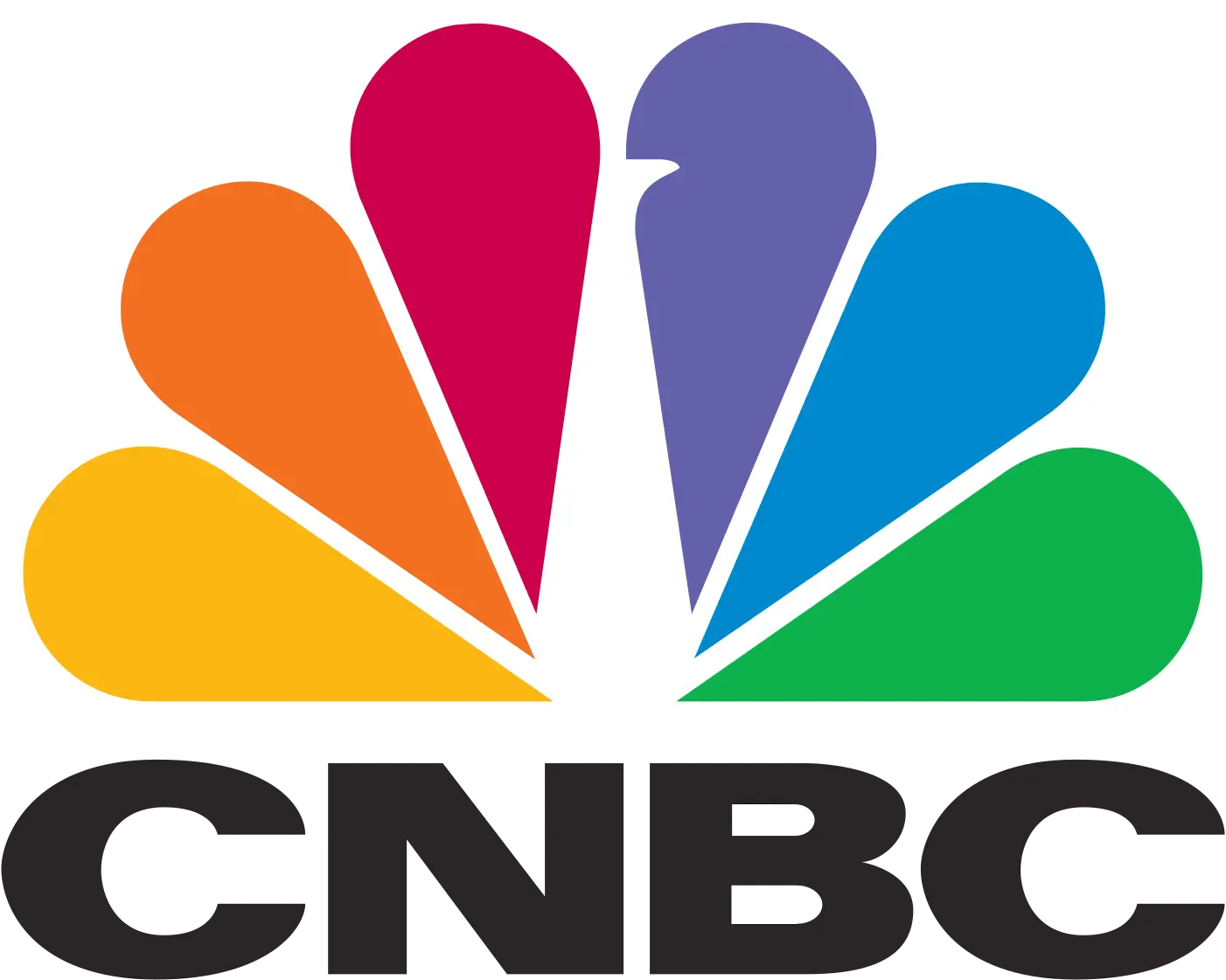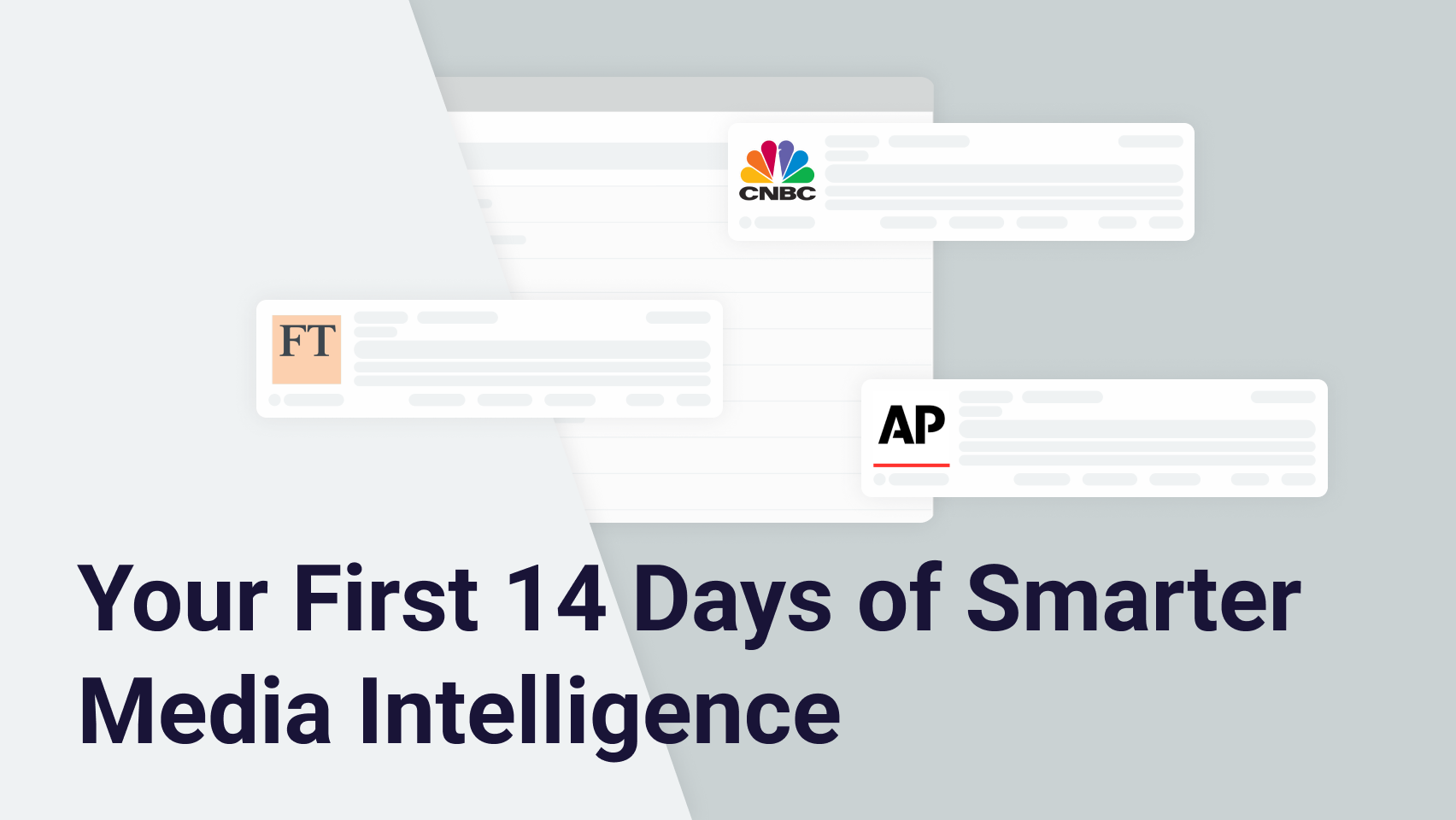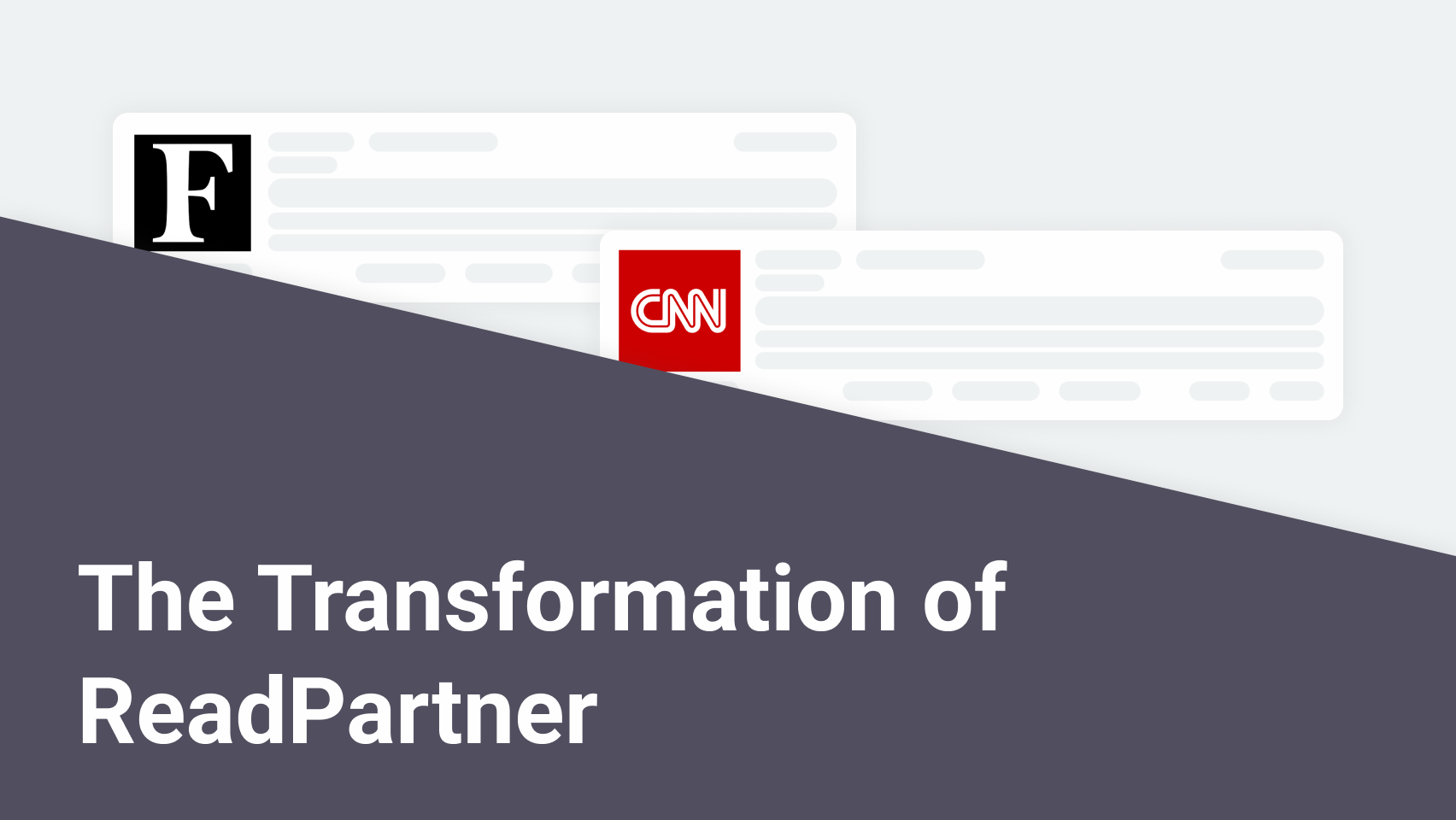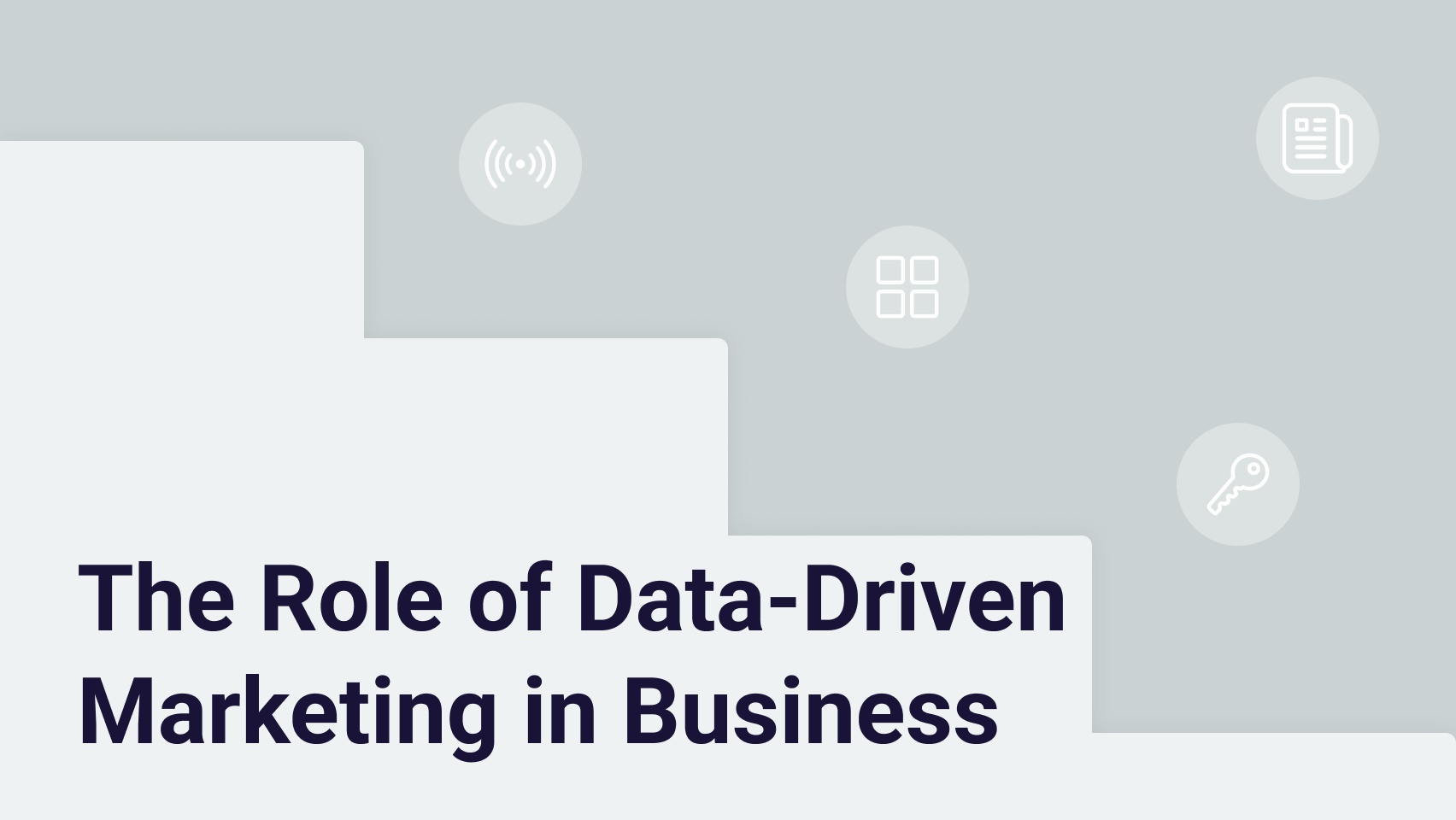Checklist: How To Set Up Online News Monitoring For Your Business
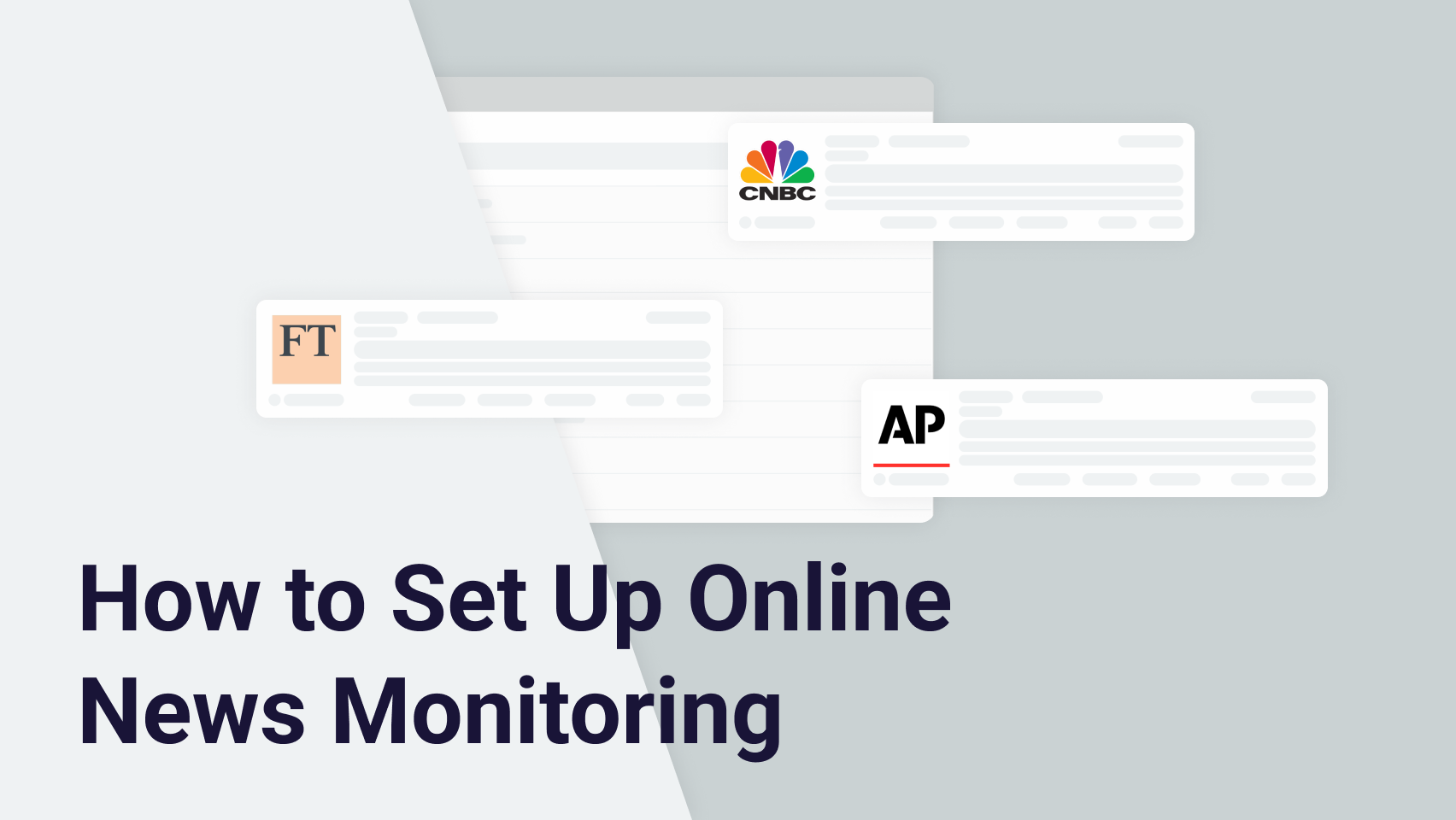
News monitoring is the process of tracking and analyzing news that are relevant to your business to extract valuable information, such as:
- Competitor’s actions to benchmark your performance or identify opportunities
- Public trend shifts to reveal unmet needs or spot reputation-building chances
- The state of your reputation to understand how your company is perceived by the public
Press monitoring can bring a wealth of intelligence for PR and marketing teams. Both PR and marketing work with the public, and mainstream news should be the primary channel of information that reflects how the general public and the media perceive your brand, products, and competition.
A big part of media and news monitoring is cutting through the noise: it is impossible to follow absolutely all news as the amount of information published is truly astonishing, so the prime way to monitor news in this day and age is to use automation tools that can scan, filter, and even summarize news articles your business is interested in. We compiled a checklist on how to set up an efficient press tracking campaign using such online tools.
News monitoring campaign checklist
Next, we will cover pivotal points of this checklist in greater detail, and provide an overview of platforms that provide press monitoring functionality.
Setting monitoring goals
Any campaign starts with defining the purpose, and news monitoring is no exception. This might look somewhat of a formality but every next step in your campaign depends on identifying the purpose clearly so do not underestimate its importance. That said, only you can know what you need and what your goals are, so spend some time narrowing it down. However, we will provide a list of possible goals to set up efficient press monitoring:
- Brand reputation management
Growing your brand’s reputation and making sure it stays healthy requires an extremely wide range of public and media intelligence: anything from news coverage to customer reviews can affect it, so monitoring these channels consistently is key to managing your reputation.
- Trend and opportunity spotting
To launch an effective marketing campaign, it is necessary to identify a demand first. This is where news monitoring can be of immense help: gathering reliable media intelligence, such as trending topics or customer sentiment to existing solutions, will allow you to see popularity shifts over time, which, in turn, translates into market opportunities if a topic is consistently on the rise.
- PR and marketing campaigns tracking and evaluation
The best way to collect feedback for your PR and marketing efforts is to look directly at how the media reacts to it as the media is a good mirror of public opinion. If the mentions you gather with press release monitoring, product popularity, or the share of positive sentiment increase, it means your PR and marketing teams are on the right track.
- Crisis detection and response
Crises are not something anyone plans, but there is absolutely no guarantee that you will never encounter one. The key to managing crises effectively is to spot the warning signs as early as possible: the earlier you learn something went sideways, the easier it is going to be to de-escalate the situation and correct the course. This is where automated press tracking can be invaluable: platforms can work around the clock to monitor the situation, making sure that you see the earliest warning signs, minimizing your damages, and allowing for quick and effective response.
- Competitive intelligence
News monitoring plays a vital role in collecting competitive intelligence. It provides real-time visibility into what your competitors are doing, how they are perceived by the media space, and how they are positioning themselves in the market.
Roles and timeframe
The other two things to decide before setting up monitoring are assigning people or teams that are going to be working on the campaign, and deciding on how long you want to run it. Again, there is no one correct answer, and the only hint that can be given is – think about your goals when making this decision. If you wish to try trend and opportunity spotting, for example, it might make sense to make this campaign ongoing without a set expiration date, and put someone who understands the market as the person responsible.
Choosing the right tool for you
The tool that is going to be best suited for you once again depends on your goals. It is important to spend time researching the available options to make sure they provide the functionality that covers your needs. Read through their websites to understand the features they offer, browse news and articles about the companies to collect more information, or even schedule demos to get better acquainted with the platforms. We have created a short list of the most popular tools in the market with brief overviews of their key features:
Building an effective list of keywords
When creating a list of keywords, on the one hand, you want not to miss any important mentions, but on the other, you want to avoid collecting unnecessary noise, so an effective list would be a balance between those things. There are general guidelines on how to create a good list of keywords but it is important to remember that this is only your starting point: it is crucial to refine your keywords once data starts coming in. It is better to start with a wider range of keywords and then to look at what your keywords actually collect, and if it is mostly noise, cut them out.
- Core terms
Start with compiling a list of key terms you want to look out for. This includes brand name, product names, and company name. Be sure to include common variations and misspellings.
- Key people
Add key people to the list: your founders, executives, spokespersons, and associates. Anyone who can get mentioned on the news.
- Competition
Include your competitors in the list of keywords: their brand and product names, and leadership. This will allow you to monitor what they are doing, gauge your performance, and use comparative metrics.
- Industry terms
Compile a list of relevant market segments, trends, and technology in your industry. This will provide you with an overall picture and allow you to use metrics such as share of voice.
- Locations
Include cities, countries, and regions you operate in or care about. This will include local news in your monitoring and provide you with regional intelligence.
- Crisis
Cover words that are linked to risk, such as lawsuit, recall, hack, etc. This will allow you to catch early warning signs if something goes wrong.
Now that you have chosen a tool and built your keywords list, all that is left is to apply the keywords and start monitoring news.
Keeping your teams and leadership aligned
There are a few things to keep in mind you can do on top of the news monitoring itself that can boost the efficiency and help you keep both team members and executives on the same page:
Alerts
Most platforms on the market offer alert functionality – and it is not something you should overlook. Alerts allow you to direct regular relevant news updates to your team members, making sure everyone knows the current situation and is on the same page. The delivery format and channel can differ based on the platform, but the most popular options include overviews, summaries, and trigger updates delivered through email or Slack.
Reports
Reports are something typically designed to keep executives informed of the situation. They can include more information gathered over a longer period of time, condensed into a much more concise overview. Some platforms provide executive-ready reports, meaning the reports you generate are formatted automatically, include relevant graphics, and are ready for presentation.
Turning gathered data into insights
To no surprise, turning monitoring into information you can do something with requires quantifying the data, which means using metrics. Of course, metrics need to be aligned with the goals you have set for your monitoring. So, again, we will simply provide a list of possible metrics that can be used:
- Volume of mentions
The total number of times your brand, product, or keywords are mentioned over a period of time. Provides an overall measurement of popularity.
This metric needs to be assessed and recorded at regular intervals to be of any use. Then you can, for example, build a plot to see the general trend, as well as spikes and drops in mentions, which will identify the overall performance of your media campaigns, as well as show big successes and rising issues you need to deal with.
- Sentiment analysis
The ratio of negative to positive mentions. Provides an overall measurement of the public sentiment towards your brand or products, depending on the mentions you analyze sentiment for.
Sentiment analysis is a good indicator of your brand’s health. This metric is also recommended to be assessed and recorded at regular intervals for further analysis.
- Reach
Estimated size of the audience exposed to your mentions. The estimate is usually calculated based on the monthly unique visitors of sources that mention you. Provides an estimate of how many people you have reached.
Reach is best estimated for crucial moments in your campaign: for example, if you identify big successes with volume of mentions, or you see a spike in negative sentiment, you can estimate how many people those news stories reached, giving you a much more accurate picture of the situation and allowing you to better plan further action.
- Share of voice
The percentage of your mentions to total mentions in your industry or market segment. Provides an estimate of how you compare to your competitors in the media space.
This metric is also important to record over time: with it, you can understand if you are increasing your market share, or falling behind your competition.
- Source geography
The breakdown of mentions by source, and splitting those sources into geographical categories. Provides an overview of where you are popular.
This metric can help you gauge your market relevance in certain places, as well as identify risk zones to understand where you want to focus your marketing efforts.
How ReadPartner fits into an effective monitoring strategy
ReadPartner stands out for its speed, efficiency, and focus on providing you insightful and analysis-ready information. It offers keyword monitoring with integrated sentiment analysis and real-time trend analysis, making sure drawing conclusions from the data is as easy and convenient as possible. With built-in alert systems identifying trend and sentiment shifts, and executive-ready report generation with action suggestions, ReadPartner is ready to help PR and marketing teams stay informed, and executives to respond quickly without getting buried in irrelevant data. You can schedule a demo to see how ReadPartner can be tailored to your use case.
Conclusion
News monitoring isn’t just about staying updated, it's about spotting patterns, detecting risks early, and staying ahead of your competition. A well-planned and thought-out campaign paired with the right platform allows you to turn a flood of articles into real, usable insights. The right approach helps you move from observation to action, no matter the type of campaign you are running.
FAQ
Stay ahead of media





